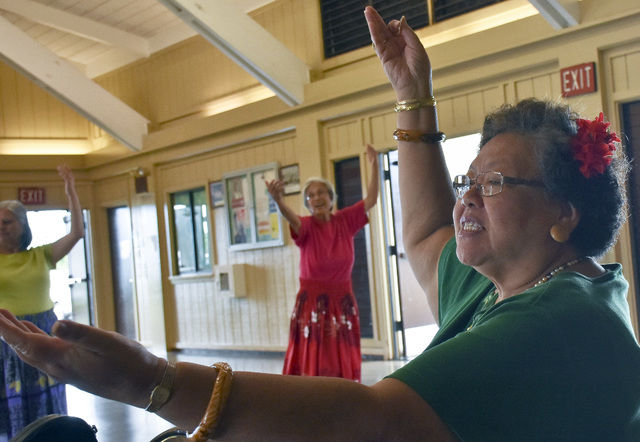LIHUE — Kumu Hula Beverly Muraoka is sad that for the third time in six years there will be no Cost of Living Adjustment to beneficiaries’ checks next year. “Even if it’s minimal, we should have something because the seniors
LIHUE — Kumu Hula Beverly Muraoka is sad that for the third time in six years there will be no Cost of Living Adjustment to beneficiaries’ checks next year.
“Even if it’s minimal, we should have something because the seniors rely on Social Security,” Muraoka said, while instructing the Lihue Senior Center’s hula classes at the Lihue Neighborhood Center.
There was no COLA in 2010 or 2011, and the Social Security Administration recently announced there won’t be any for 2016, thanks to the government index used to determine whether an adjustment was justified to offset inflation. This year’s culprit was the price of gasoline which fell 23 percent, wiping out any chance for an increase in the checks going to more than 60 million recipients.
“That is wrong,” said Amil Valpoon, a bonsai instructor from the Kauai Bonsai Club who was working with the Lihue Senior Center.
Bobby Girald, another bonsai afficionado, agreed.
“Inflation is not just on the cost of gasoline,” Girald said. “If you look at the seniors, many of them don’t drive, and many more don’t even own cars.”
According to the Senior Citizens League, those recipients have lost nearly a fourth of their buying power over the past 15 years, thanks to the rising cost of housing and medical expenses. Since 2000, housing costs for seniors have increased by 44 percent, heating oil by 159 percent, eggs by 117 percent, and gasoline by 76 percent.
Social Security’s COLAs have averaged just 2.2 percent per year during the same time.
“Seniors have been through this,” Muraoka said. “By not having, they learn to live within their means. They’ve always done this. It’s so sad that we can’t even take care of the seniors. If we have extra (money), it’s always welcome.”
In 1972, Congress modified Social Security so it would reflect the loss of purchasing power of the dollar, resulting in the adoption of the Consumer Price Index, or CPI. The index, at that time, measured the price increases as a result of the inflation caused by the Federal Reserve of a market basket of goods and services bought by wage earners.
In 1987, Congress directed the Bureau of Labor Statistics to develop an alternate CPI for the elderly. This was called the CPI-E, and the BLS has been “developing” that alternate ever since.



